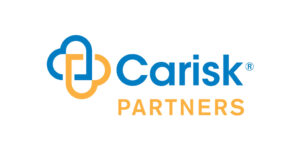As property/casualty insurance leaders work to map out strategies year after year, they face a laundry list of external forces that impact their businesses—many beyond their control.
“We must adapt to them” instead, Mark Lyons, chief financial officer of American International Group, told industry participants and analysts gathered at the Fitch Ratings North American Insurance Conference in mid-November 2019.
“It’s human nature to want to control everything,” said Lyons, who focused the bulk of his remarks on things that carriers—and AIG, in particular—can control to improve their bottom lines. Risk appetite, reinsurance purchasing strategies, distribution management and operational efficiency are some of the controllable items. (See related article in the Jan/Feb 2020 edition of Carrier Management’s print magazine, titled “Remaking AIG: CFO Describes Changes in Underwriting, Distribution and More.”)
[See related article: “Remaking AIG: CFO Describes Changes in Underwriting, Distribution and More.”]
What can’t they control?
- Geopolitical change. “We’ve got power wars that affect a globally connected economy. We have different levels of potential military buildup and associated budgets around the world. And we actually are having fundamental discussions about capitalism itself, which I think is more different than we had in the past,” Lyons said.
- Interest rates. Estimating a 12-year run of low interest rates so far, “that’s beyond the new normal of how you have to think about returns—especially on long duration businesses,” he said.
- Market volatility in equity and other investment markets “is enormous…and you have to adapt to that.”
- Economic and social inflation. Lyons, an actuary by background, said that social inflation, historically, has probably added 200-250 basis points on top of economic inflation. After waning in the recent decade, in some cases, social inflation “is rearing its head again.”
“Everybody talks about commercial auto” in terms of having the most obvious impact. “But it’s only the insurance industry that really looks at things in a vertical, monolithic way—commercial auto vs. product liability vs. medical on workers compensation claims. Aren’t they all common?”
“Don’t we buy medical services, physician services, hospital services, engage lawyers? Yes.”
Lyons, who also mentioned local tax rates and changes in accounting standards among uncontrollable external factors impacting insurers, went on to list factors beyond inflation that fuel claim cost trends.
- Court appointees, generally have 10-15 years of impact. Recently, from prior administrations, you probably have more of a liberal leaning, and that may tilt toward conservative—perhaps two years from now and beyond. That could “offset some of the social inflation commentary that we heard from some companies on earnings calls,” he suggested. “We will have to wait and see. But it’s another countervailing force that’s out there.”
- Venue selection. “One thing people seldom think about is jurisdictional shopping. [And] that’s getting increasingly creative,” said Lyons, noting that for airline defendants, he has seen examples of bodily injury suits brought where the aircraft leasing company is located.
“The point is, you can find yourself in jurisdictions different than you expected when you wrote the policy, and I think product liability is the clearest example of that,” he said.
“You don’t know where that claim is going to originate from,” he said, giving the example of a manufacturer of cribs sold throughout the U.S. “Is it going to be in the Bronx or Dade County? Or is it going to be in Duluth? You really have no idea, when you price the product, what kind of venue you’re going to find yourself in. That is another change that is outside your control.”
Lyons also listed political leadership as an uncontrollable force to contend with. “There has probably not been a clearer extreme of choices that are emerging, at least in the U.S. presidential platforms, with different budgetary and other implications that are going to ripple through. We will have to wait and see how that is, but we are going to have to be able to react to it, as organizations, as industries,” he said.
All of the above, he said, are “examples of external forces that we must consider as we grow our businesses. But there are some that we can control, he added, going on to detail underwriting and distribution management changes at AIG that have improved profitability in the past 18 months.





















 E&S Market Sees 21% Compound Growth Within Past 5 Years: Conning
E&S Market Sees 21% Compound Growth Within Past 5 Years: Conning  California Insurers Required to Increase Home Coverage in High Risk Wildfire Areas
California Insurers Required to Increase Home Coverage in High Risk Wildfire Areas  Viewpoint: Strategies for Brokers as M&A Slows and Insurance Rates Soften
Viewpoint: Strategies for Brokers as M&A Slows and Insurance Rates Soften  Surviving the ‘Silver Tsunami’: Closing the Talent, Skills Gap in Underwriting
Surviving the ‘Silver Tsunami’: Closing the Talent, Skills Gap in Underwriting 